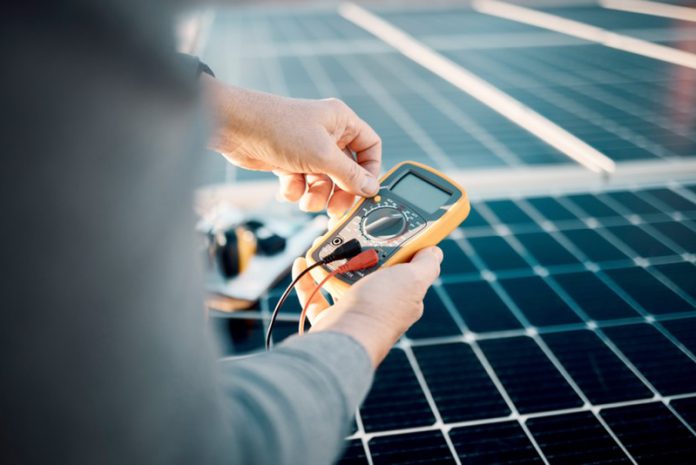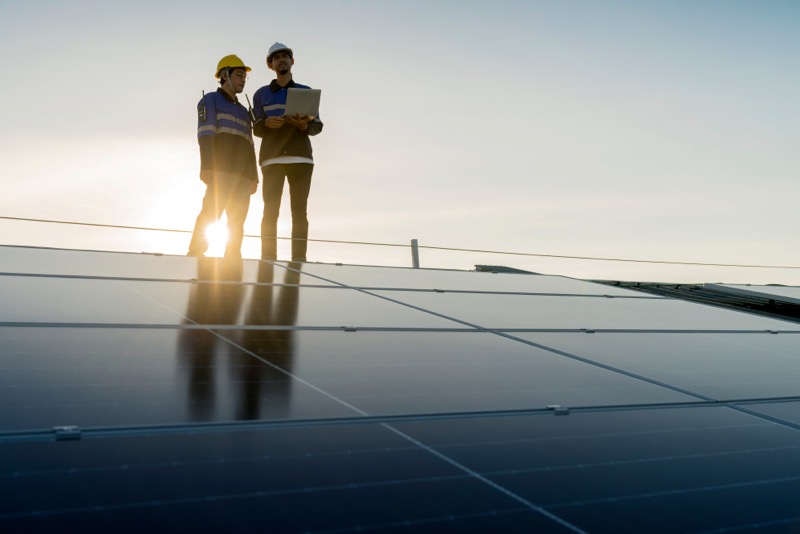
Solar panels are a fantastic way to generate clean energy and reduce energy costs. However, to ensure that you’re getting the most out of your solar panels, it’s essential to perform regular inspections on them.
The Importance Of Regular Inspections
Solar panel maintenance involves regular inspections to help ensure that your system is functioning correctly. Performing periodic checkups can detect issues with the solar panel system’s wiring, connections, or general performance that could lead to dangerous electrical fires or other risks.
Another reason why regular inspections are essential is that they help to ensure that your solar panel system is operating at its peak performance. Solar panels degrade over time, and regular inspections can help identify when cleaning or maintenance needs to be performed to optimize their output.
Lastly, inspections can help identify potential opportunities to upgrade system components too. These include adding additional panels or upgrading inverters to maximize your energy output.
When To Perform An Inspection On Your Solar Panels
There are many ways to care for your solar panel system. Regular inspections are one of them. Generally, you may inspect your system once a year. The following are a few circumstances when you may need to inspect your roof’s solar panels:
- Before Moving In To A New Home
Are you planning to move into a new home that has solar panels as its features? Before signing off the deal with your realtor, make sure that you go through the inspection report. In fact, it’d be better if you curate a separate inspection from a licensed solar panels expert. They have the specialized knowledge and expertise to determine whether the solar panels in your new home are still working, will need any repairs soon, or require some upgrades.
- Significant Changes In Weather Conditions
Weather conditions can significantly affect the performance of solar panels, so it’s essential to be aware of when an inspection may be needed.
For example, the strong winds and moisture from the storm can create additional stress on the solar panels, causing them to shift and become misaligned. This could reduce their effectiveness and lead to poor energy production. Any dust or debris accumulating on the boards during the storm can also cause poor energy production.
- Legal Requirement
Finally, some jurisdictions require homeowners to perform an anti-islanding test when they install a solar energy system.
An anti-islanding test ensures that your solar system won’t create an unsafe electrical condition when the power goes out. If you live in an area where this is required, you must have the test performed regularly. Some sites only require this test once every five years, while others require it every two years. It’s essential to check with your local government to determine the necessary frequency.

How To Perform An Inspection
Conducting a pre-installation solar inspection before adding any solar panels to your house is essential.
A solar panel professional will inspect the site’s physical integrity and proposed installation structure and identifies potential safety hazards. In addition, they’ll check the electrical systems and wiring, confirm that there’s enough roof space to fit the number of solar panels needed, and ensure that the site meets all local codes and regulations.
Meanwhile, a regular solar panel inspection may include:
- Checking for any physical damage to the panels. This includes checking for signs of corrosion or weathering, any cracks or splits in the surface, and any loose connections that may be present. Before this is done, panels should be adequately cleaned for better visuals.
- Inspecting the wiring with a multimeter. This will allow you to test for proper voltage, current, and resistance readings. If there are any discrepancies, then this could be an indication of a problem with the system.
- Checking the breakers and fuses to make sure they’re functioning correctly. This should include checking for any tripped breakers or blown fuses. If you find any problems, replacing these components as soon as possible is best.
- Inspecting the mounting structure of your solar panel system. This includes checking for loose bolts or connections and examining for signs of structural damage. If there are any issues found, they should be addressed immediately to prevent further damage.
- Inspecting the inverter will help ensure that the solar panel system is producing the optimal amount of power. This can be done by looking for any signs of wear and tear on the component and ensuring the connections are secure.
Overall, it’s essential to regularly inspect your solar panel system to keep it functioning optimally and safely. By following these instructions, you can quickly identify any potential problems before they become significant.
In Conclusion
Regular inspections are a vital part of the upkeep and maintenance of your solar panel system. Minor problems can quickly become large and expensive without regular inspections. Solar panel inspections should be performed before and after installation, as well as regularly throughout the system’s life.
When performing an inspection, ensure that you check all electrical connections, wiring, and components to ensure they are safe and functioning correctly. By following these instructions and staying on top of your system’s inspections, you can be sure that your solar system will continue to work at peak efficiency for years to come.














